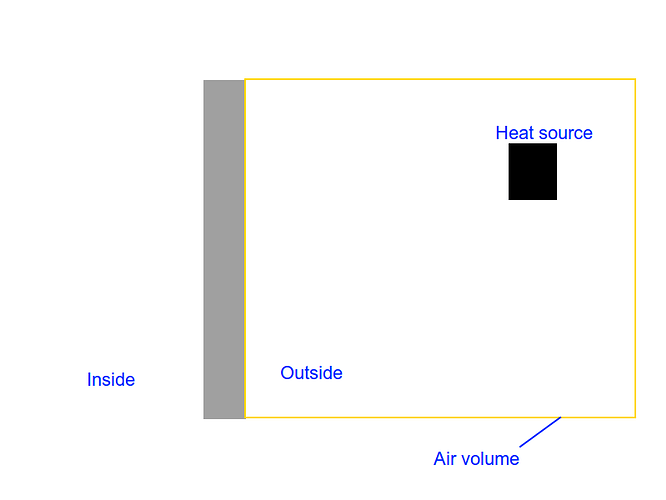Hello, everyone.
I need to model a situation when the sun heats a wall and take into account 2 ways of heat transfer: conduction into the wall and convection on the exposed surface. The problem is that CHT analysis does not allow me to place a boundary condition on an interface surface (which is logical) and there can be only a volume heat source (for a single wall it is not a problem, but for real scenarios is quite confusing).
Is there a better way to model the situation?
Hi @ngerasimov and thanks for reaching out to us.
I think there has been a similar simulation in the past but I am not 100% sure - having a look later on. Let me tag the @power_users here as well as my colleague @sjesu_rajendra who are more familiar with the application of CHT. One of us will answer you as soon as possible!
Best,
Jousef
Look forward to.
Hello @ngerasimov,
Note that it is not possible to explicitly define a convection boundary condition to interface, the heat transfer equations are solved based on the materials in contact and velocity of the fluid flow. These are the parameters which are used to determine the ‘heat transfer coefficient’ between solid and fluid, whereas here in CHT the solver calculates this. Hence we will not be able to override the convection effects.
How do you intend to define the heat energy coming from the sun? This will help in addressing the problem. At the moment radiation is not supported with the CHT solver and hence this needs to be roughly approximated with convection effects (not accurate though).
Cheers,
Sam
Well, yes, I agree, physically the sun heats the solid surface and only after its power transfers into a temperature wave, one can see heat conduction inside of solid and initiated convective flow outside. So, probably, it will be accurate enough to model a thin part of a solid volume as a heat source of defined power. I only cannot find any instruction how to do it correctly. Does it have to be a separate cell zone? Refinements? Or just a separate solid with the same material assigned and one side of it will be an interface?
Hello @ngerasimov
This is one direct way of doing this problem.
So you have multiple solids, each having surface contacts with other solids. This makes automatic interface detection possible and also define a heat source to the external solid. This is a very rough approximation of modeling sun as already said, radiation is not being included in this case. Let me know if you have further queries.
Cheers,
Sam
